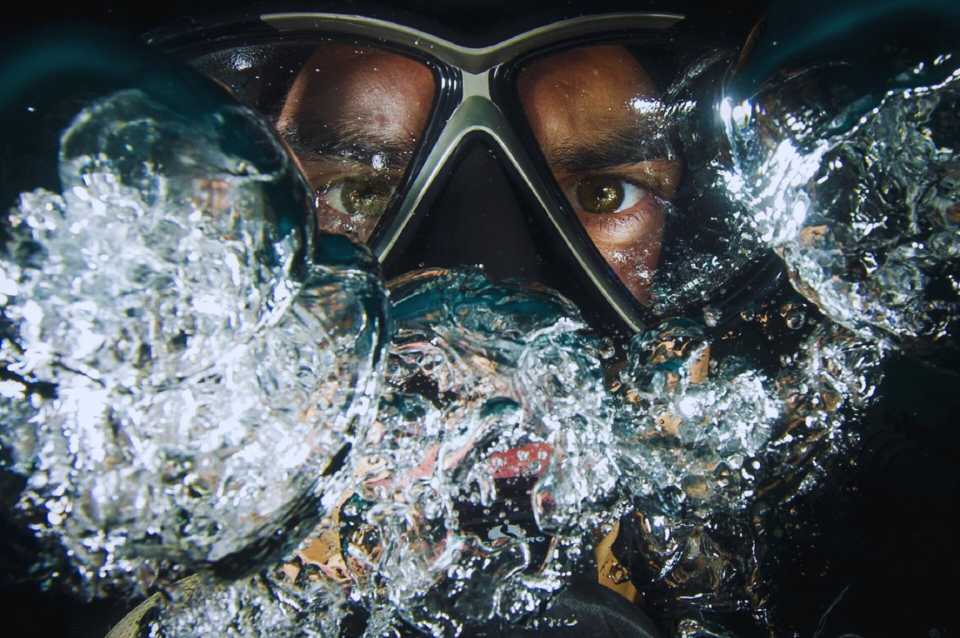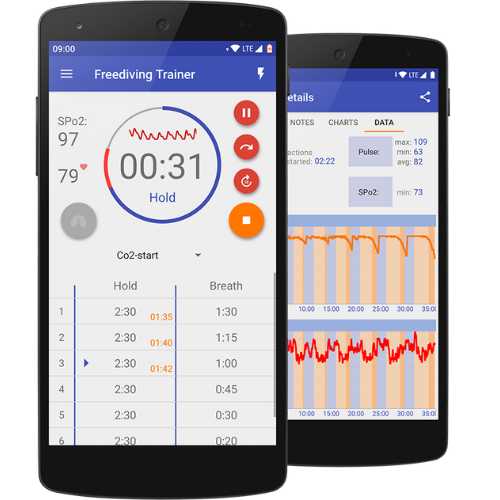Breath-holding is an extremely important skill that all divers need to know, irrespective of what type of diving they specialize in. Whether it is spearfishing, static, recreational, or any other form of freediving, being able to hold your breath for longer is key to becoming a better diver.
Breath-hold is a constant skill every type of diving requires, even though overall techniques vary.
Your breath-holding capacity directly influences other training techniques and movements.
This guide will discuss the techniques you need to know to increase breath-hold for freedivers.

Training Specificity
The two major specificities associated with breath-hold training are time and work rate. The idea is to develop breath-holding techniques that can replicate your long-term goals to have a higher chance of reaching them faster.
Time Specificity
The difference between a mediocre training system and a strategic one is the total dive time incorporated into each dive repeat that you perform. You must create a breath-holding training plan reflecting the total time required to hold your breath underwater to complete an actual dive.
When the training is harder than the experience, you will reroute your body to prepare for the longest breath-hold.
Doing multiple repeats of the exercise and building dive time confidence will make the actual dive much simpler. Over time, you will increase your breath-hold time and push your limits.
Work Rate Specificity
Work rate needs to be at the forefront of your training, especially if you want to increase your static breath hold to dive deeper and dynamic diving.
The point of work specificity is to avoid the artificial increase in oxygen consumption and carbon-dioxide production. The practice is pointless if you exceed your dive time through artificial means.
Your practice dives need to be as rigorous as your actual dives to efficiently increase breath-hold. Most practices are less energy consumption compared to the actual dives. Slow FIM hangs and bottom crawling can’t be compared to real diving.
The work rate will decrease, creating a false impression that your breath-hold is improving. You need to create training systems that replicate actual work rates.
This way, you will see quantifiable improvements and increase lung capacity through deep breathing.
Specificity and Accessory Exercises
It isn’t just specificity that affects your breath-hold. The three main accessory areas that affect breath-hold are the urge to breathe, oxygen tolerance, and carbon-dioxide tolerance.
Working these three breath-hold accessories alongside your specificity training will help you to improve your weak spots that reduce your breath-hold capacity. It is very easy to analyze and interpret the three accessories.
If you feel breathless or need to breathe before you’ve finished 50% of your goal, carbon dioxide tolerance is your weakness.
If you feel hypoxia during your specificity training or free dives, oxygen tolerance is your issue.
Lastly, if even the slightest urge to breathe deeply invokes panic, then the urge to breathe is something you need to work on.
Accessory Training – Carbon Dioxide and Hypoxia Tables(CO2 & O2 Tables)
The exercises described below will help with accessory training. The exercises are similar in terms of execution since they all focus on exchanging carbon dioxide and oxygen.
Carbon Dioxide Tolerance
Carbon dioxide is a natural by-product of cellular respiration and cell metabolism. With the consumption of oxygen, carbon dioxide is produced.
When you hold your breath for prolonged periods, there will be a natural build-up of carbon dioxide in your cells and lungs.
There are receptors in our brain that measure the amount of carbon dioxide in the body to measure the pH of your blood. The need to eliminate the built-up carbon dioxide causes us to exhale.
The point of carbon dioxide tolerance is to train your body to function at low pH levels, thereby resisting exhalation urges at high carbon dioxide levels.
For carbon dioxide tolerance, the best accessory training incorporates short breath holds and recoveries for your body to become accustomed to increased carbon dioxide levels. As you repeat the training, your body will have an elevated but steady level of carbon dioxide.
Oxygen Tolerance
Oxygen tolerance works oppositely to carbon dioxide tolerance.
After holding your breath for a while, your body experiences a lack of oxygen on a cellular level.
This causes the urge to breathe, which results in hypoxic conditions. Oxygen tolerance training or tables will help your body adapt to hypoxic conditions and function even at low oxygen levels.
The accessory training for oxygen tolerance is based on the same concept of short breath holds and recoveries. The difference is that you alternate between passive exhales and forced exhales. By doing so, you will become hypoxic much faster.
Over time, your body will desaturate your blood and hold on to your deep breath, even with constant low-level hypoxia. In the beginning, your recovery time will be longer, but with practice, it will reduce.

There are some great apps that you can use on your Android or Apple phone to help with your Apnea Tables. Personally we use Freediving Apnea Trainer which is available on the Google play store and the Apple app store.
Urge-To-Breathe
For the urge-to-breathe accessory, you use the technique of mild controlled exposure.
For instance, you can begin by slowly increasing your underwater time after the urge to breathe sets in. Eventually, you will get better at tolerating the urge, and the panic will subside.
Other Types of Exercises
Many other types of exercises and tips will help you increase your breath hold. In this section, we will go over a few of these techniques.
Inhalation Stretches
This stretch, also known as the packing stretch, helps increase capacity. The steps to recreate are described below:
- Get into a comfortable position low on the ground.
- Relax and breathe normally for a minute.
- Next, practice diaphragmatic breathing and hold your breath after a few inhales.
- With your right arm pointing up, lean towards your left.
- Then put both of your arms above yourself and lean forward. Next, move both arms behind your back.
- Hold both positions for 10 seconds, after which you will position your sternum upwards for 10 seconds.
With practice, you can do all four positions within one breath. By doing so, you are expanding muscles and letting them stretch deeper and for longer.
If you feel uncomfortable or lightheaded at any point, take a break and resume once you feel better. If this continues, you might not want to continue with the exercise.
Exhalation Stretches
Exhaling stretches improve your ability to exhale deeper. Deep exhalations help you improve your ability to draw from your residual lung capacity.
Residual capacity refers to the air left within your lungs after exhaling, which isn’t regularly used.
To practice this stretch:
- Begin with a large exhale. This will count as your first stretch.
- Then hold your breath, lean forward, and try to draw on your residual air. In this process, you will stretch your diaphragm.
- Try to maintain the position for 5 to 10 seconds.
- Relax for 4 to 5 seconds, then repeat the process 3 to 4 times more for each set.
Once you succeed with the simpler sets, go for deeper stretches.
This time, begin with a deeper exhale- you're aiming for empty lungs. Once you’ve emptied your lungs, hold your breath but don’t lean forward. Then perform the stretches as previously described.
Once you get the hang of it, you can attempt to simultaneously do inhalation and exhalation stretches. First, do the inhale stretch, then the exhale stretch, followed by a deeper inhale stretch and then a deeper exhale.
An air restriction device like the PowerBreathe can help a lot with breathing stamina and strength and makes a great add on to this training program.
Segmented Breathing
This type of breath training enables divers to separate the functions of individual muscle groups involved in the breathing process. This, in turn, helps them maximize their breath-hold potential.
It is normal to think that the deepest breath can be held through inhalation from the chest. But it is the complete opposite.
The point of this exercise is to breathe by using your diaphragm and not your chest.
- You begin by breathing through pursed lips.
- Raise your shoulders while doing so.
- You are doing it right if you feel your diaphragm or abdominal region tense.
- Draw in as much air as possible until two-thirds of your lung capacity is reached.
- If you feel your chest filling up, then restart.
- Next, you will begin to work your intercostal muscles. Expand them to stretch out your chest as much as possible. This way, you are making more room for air in your lungs.
- Once you’ve filled your lung’s maximum capacity, slowly exhale through the mouth.
- Then repeat the process from the start.
Continued practice of this exercise will help you increase your lung capacity.
It might take time, but the results are worth the practice.
Final Thoughts
Increasing your breath capacity comes with a lot of time and training.
The goal is to take in more air by the final breath so that you're able to enjoy your free dive and stay down longer.
Consistent and regular training is your key to that.
We highly recommend that you can sign up for a freediving course to get more information. A qualified instructor will teach you how to increase your breath hold for freediving way better than any online article ever could.
Safe diving.



